Ever tried to shout louder than a jet engine to get noticed? That’s what doing SEO in the travel industry often feels like amid a crowd of competitors all vying for attention. It’s a digital jungle out there, but fear not! This guide is your compass and map rolled into one. Here, we’ll navigate through the intricate world of travel SEO. Like Plerdy helps you understand your website’s heat map and user behavior, we’ll decode the SEO strategies that make your travel website not just a mere pin on the map but a shining beacon to your potential customers. Let’s dive in and discover how to make your travel website the go-to destination for wanderlusters everywhere!

Understanding the Travel Industry’s Digital Landscape
Imagine navigating through a bustling global market, where every stall is a travel website clamoring for attention. That’s the travel industry’s dynamic, competitive, and ever-evolving digital landscape. In this vibrant online ecosystem, understanding the nuances of travel SEO becomes your passport to visibility and success.
The Competitive Online Travel Market
The travel sector online is a battleground of big players like Expedia and emerging niche agencies, each fighting for their share of the digital pie. A report by Statista highlights the rapid growth of online travel bookings, with user penetration expected to hit 48.3% by 2025. Standing out in this crowded space demands a strategic blend of SEO tactics and an in-depth understanding of market dynamics.
Key Trends in Travel SEO
The digital travel market isn’t just about size but trends and behaviors. For instance, the rise of mobile bookings has shifted focus to mobile SEO. Google’s mobile-first indexing underscores this trend, pushing websites to optimize for mobile users. Additionally, the increasing reliance on voice search has introduced a new dimension to keyword strategies, with more conversational and long-tail keywords gaining traction.
Like a sailor in the great ocean of online information, navigating the digital environment of the travel sector requires a strong SEO strategy that can adapt to these changing trends.
The Role of Authentic Content and User Experience
At the heart of travel SEO lies content. Authentic, engaging content improves rankings and resonates with travelers seeking genuine experiences. Plerdy’s analytics can unveil user interaction patterns on your site, guiding content creation that directly addresses user intent.
Moreover, user experience (UX) plays a crucial role. Websites that offer seamless navigation, fast loading times, and valuable information naturally attract more traffic and retain users longer, boosting SEO rankings.
Understanding the travel industry’s digital landscape is about recognizing the trends, adapting to technological advancements, and prioritizing user experience. Your travel website can prosper in the competitive online industry by doing so. Remember, being adaptable and user-focused in travel SEO isn’t just a strategy; it’s a journey toward digital success.
Crafting Your SEO Strategy: Where to Begin
Embarking on an SEO journey without a map is like setting sail without a compass. The digital seas of the travel industry are vast and ever-changing, making a well-crafted SEO strategy not just an option but a necessity. Where do you start in this complex world of keywords, links, and algorithms? Let’s chart the course.
Setting Realistic SEO Goals
Begin by defining what success looks like. Is it higher traffic, more bookings, or improved search rankings? According to a study by The foundation of any effective SEO plan, the conductor is the establishment of clear, quantifiable objectives. Whether aiming to increase organic traffic by 20% or dominate local search results, these targets will shape your SEO journey.
Knowing Your Audience
Understanding your audience is critical. Who are they? What are they searching for? Tools like Google Analytics provide insights into your audience’s demographics and search behavior. This information is invaluable in tailoring your SEO strategy to meet their needs. Remember, in SEO, one size does not fit all.
Competitive Analysis
Analyzing your competitors offers a window into what works and what doesn’t in your niche. Tools like SEMrush can help you understand your competitors’ keyword strategies and backlink profiles. You can find areas where your strategy is lacking and ways to surpass them by analyzing them.
Embarking on crafting your SEO strategy is like piecing together a puzzle. Every element, from understanding your audience to analyzing competitors, fits together to create a bigger picture. SEO requires continual learning and adaptation as you begin your path.
Developing an SEO strategy is a continuous process that calls for persistence, flexibility, and patience. Begin with clear goals, a deep understanding of your audience, and a thorough analysis of your competitors. With these foundations in place, you’ll be well on your way to navigating the competitive waters of the travel industry’s digital landscape.
Keyword Research and Optimization
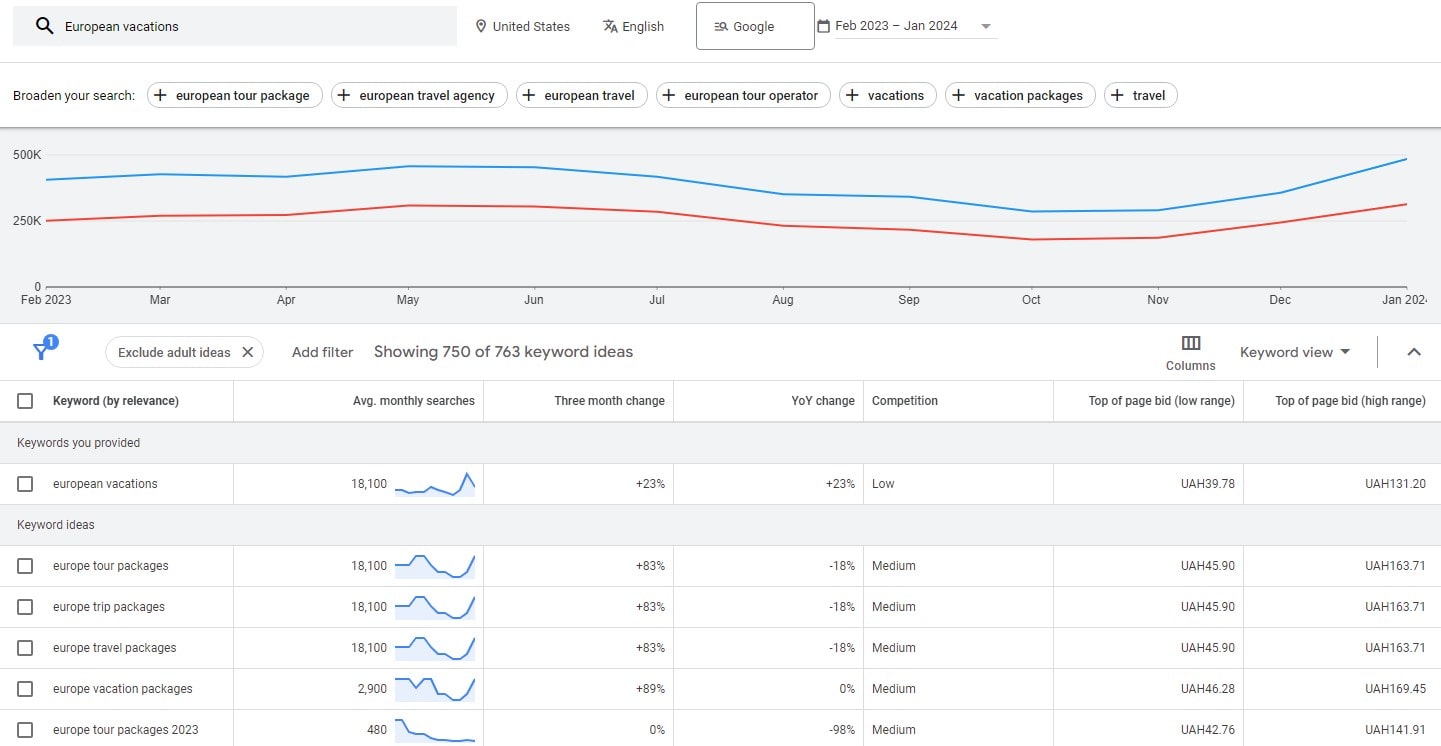
SEO without keyword knowledge is like treasure hunting without a map. Keywords are the linchpin of any SEO strategy, especially in the travel industry, where the right words can be the difference between being found or lost in the vast sea of online content.
Tools for Keyword Research
The first step in keyword research is to arm yourself with the right tools. Google’s Keyword Planner is a classic choice, offering insights into search volumes and competition levels. Ahrefs and SEMrush are also popular, providing detailed keyword analysis and tracking. These tools help you uncover the phrases your audience uses, a crucial step in aligning your content with their searches.
Integrating Keywords into Content
Once you have your keywords, it’s time to weave them into your content. But it’s not just about peppering them throughout your text; it’s about incorporating them in a natural way that enhances readability. According to Moz, keywords should be strategically placed in titles, headers, and meta descriptions throughout the content. Remember, overstuffing keywords can do more harm than good, leading to penalties from search engines.
Long-Tail Keywords: The Untapped Goldmine
In the travel sector, long-tail keywords are your secret weapon. Longer, more precise phrases may have lower search numbers but greater conversion rates. For instance, instead of targeting “European vacations,” focus on “affordable family-friendly vacations in Europe.” Long-tail keywords help you target niche demographics and stand out in a crowded market.
Local Keywords: Capturing the Local Audience
For travel businesses, local keywords are indispensable. If you’re a hotel in Paris, including phrases like “boutique hotel in central Paris” can help you attract visitors looking for accommodation in your area. As per the Search Engine Journal, local SEO is crucial for businesses attracting a regional audience.
Keyword research and optimization is a meticulous process that requires understanding, creativity, and strategic thinking. It’s about balancing popular and niche keywords and integrating them seamlessly into your content. Doing so ensures that your travel business doesn’t just join the race but leads the pack. In SEO, keywords steer your content to its target.
Leveraging Local SEO for Greater Visibility
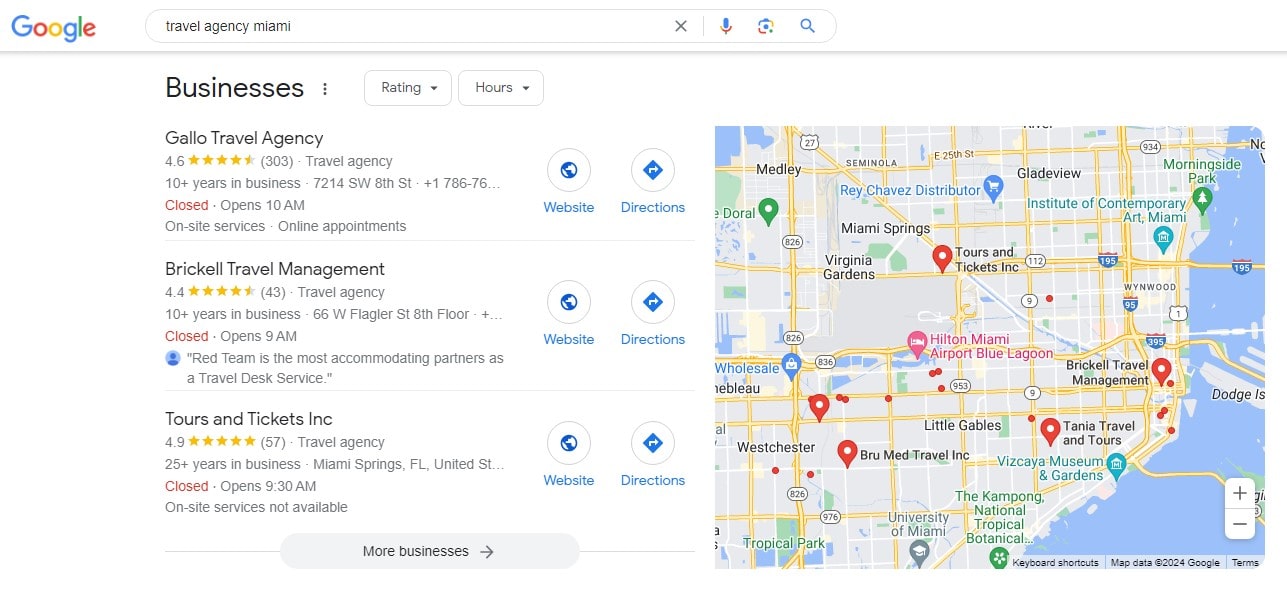
In the travel industry, where global reach is as crucial as local presence, leveraging local SEO is akin to spotlighting your business in your backyard. Make your travel service the locals’ and tourists’ first choice.
Optimizing for Local Searches
To begin, ensure your business appears in local searches. This means claiming your Google My Business listing, a pivotal step in local SEO. According to HubSpot, a well-optimized Google My Business profile increases your chances of appearing in Google’s Local Pack, Maps, and organic rankings. Accurate, up-to-date information is essential, including your business name, address, phone number, and hours.
Utilizing Google My Business
Your Google My Business profile is more than just a listing; it’s your digital storefront. Post-high-quality company images, encourage and respond to reviews, and update regularly. BrightLocal’s research highlights the importance of reviews in local SEO, noting that 87% of consumers read online reviews for local businesses in 2020.
Local SEO is not just about being seen; it’s about being chosen. It’s about making your travel business a local landmark in the digital world. By focusing on local SEO, you can increase your visibility where it counts the most – in your immediate vicinity.
Leveraging local SEO is about understanding and utilizing the tools available to ensure your travel business stands out in its local area. It’s a strategic move to put your service on the map where your immediate customers are. In the vast world of travel and tourism, the power of local SEO reminds us that sometimes, the most significant journeys start right at our doorstep.
Content is King: Developing Engaging and Relevant Content
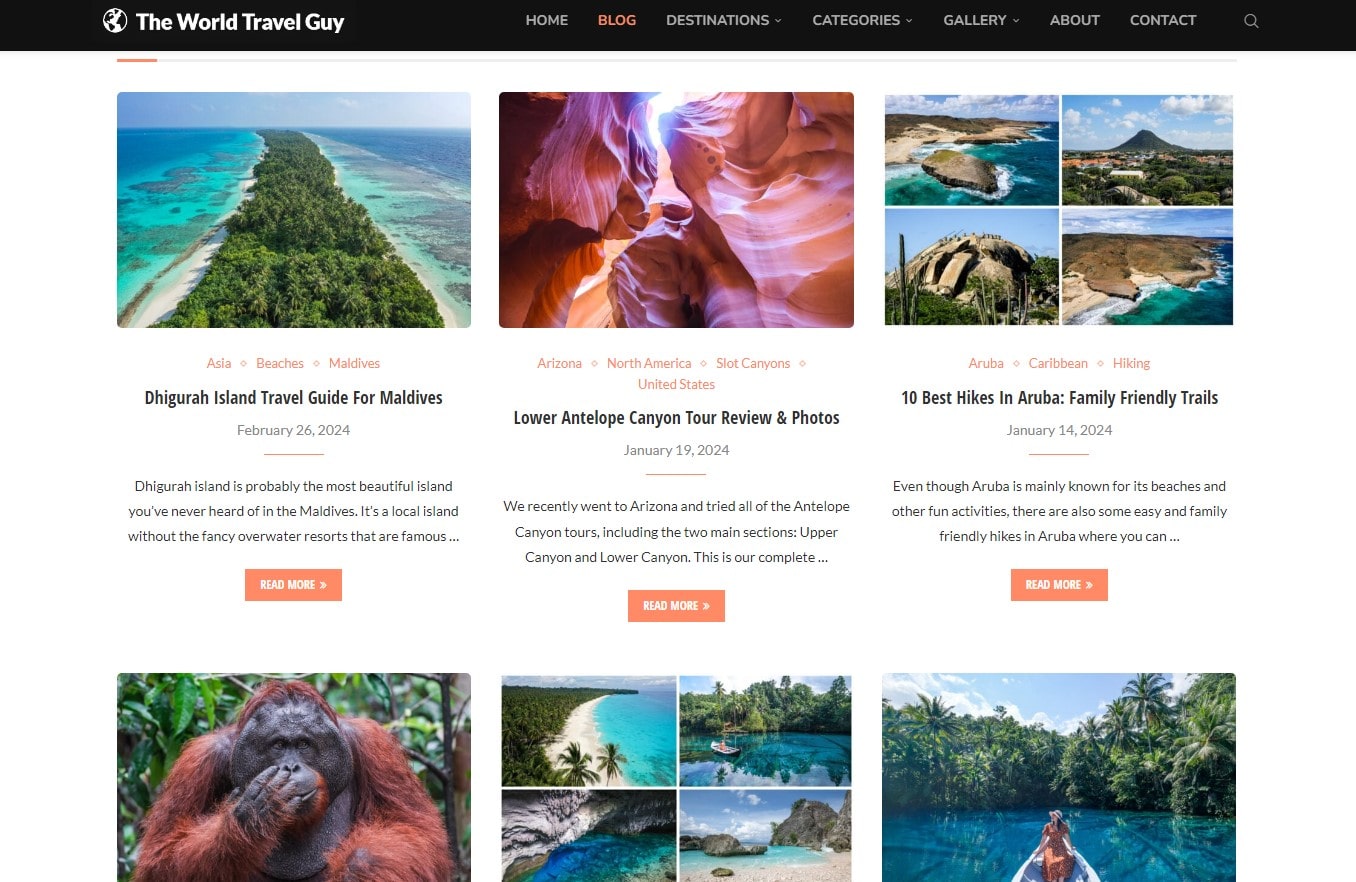
In the digital travel landscape, content isn’t just king; the globetrotting storyteller brings destinations to life. A good travel SEO strategy relies on engaging and relevant content to turn casual browsers into passionate site visitors.
Types of Content That Resonate
Travelers seek content that fuels their wanderlust. Vivid descriptions, immersive videos, informative blogs, and stunning photography are more than just information; they’re digital experiences. According to Forbes, content that tells a story showcases experiences and offers valuable information resonates deeply with travelers. A blog post about “Top 10 Hidden Beaches in Bali” transports readers to those sun-kissed sands.
Best Practices in Content Creation
Creating content that captivates and converts requires a blend of art and strategy. It starts with understanding your audience: What are they seeking? What inspires them to travel? SEO tools like Moz and SEMrush can offer insights into trending topics and keywords. Incorporate these organically into your content to improve visibility and relevance.
Authenticity is key. Travelers can spot generic descriptions a mile away. Personalize your content; if it’s a hotel, describe the sunrise from its balconies. If it’s a city guide, narrate it through local eyes. User-generated content, such as reviews and travel stories, adds a layer of trust and relatability.
Checklist for SEO-friendly Content
Your content must be more than just engaging; it must be SEO-friendly. This means:
- Using keywords naturally and contextually.
- Ensuring your content is mobile-friendly, as a significant portion of travel-related searches happen on mobile devices.
- Share your content on social media.
- Utilizing meta descriptions and alt tags effectively.
Developing engaging and relevant content in the travel industry is about creating a digital window into the world’s wonders. It’s about crafting stories and experiences that resonate with your audience and align with SEO best practices. By doing so, your travel website becomes a resource and a digital destination in its own right. Remember, in travel SEO, content isn’t just king; it’s the guide, the map, and the journey all rolled into one.
Technical SEO: Ensuring Your Site is Search Engine Friendly
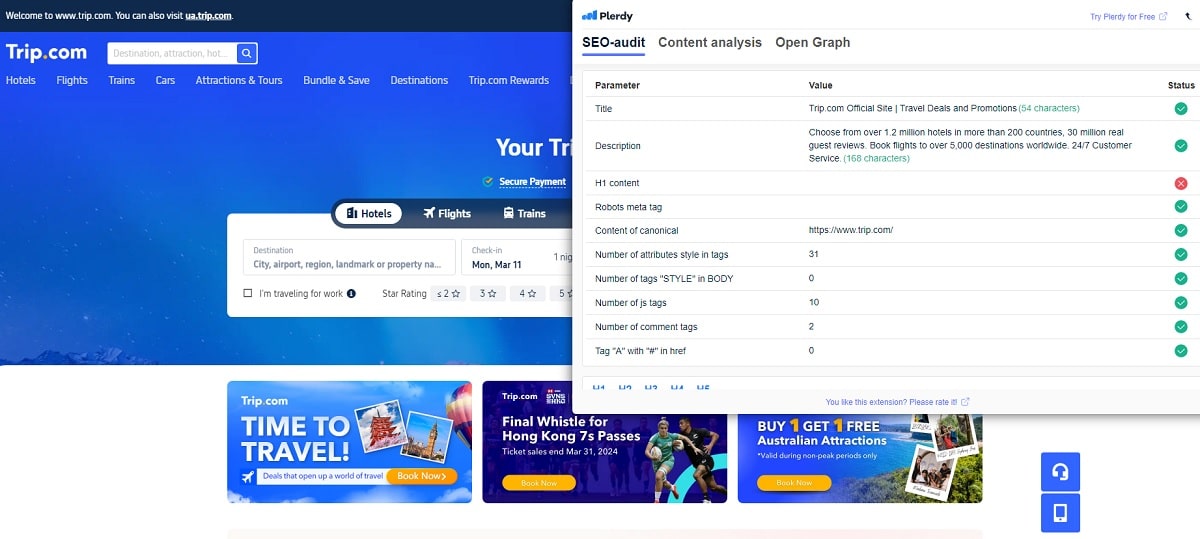
Just as a traveler needs a well-functioning vehicle to embark on their journey, your website requires robust technical SEO to navigate the digital world successfully. Technical SEO is the engine under your website’s hood, ensuring it runs smoothly and efficiently for search engines and users.
Mobile Optimization
In today’s mobile-first world, ensuring your website is mobile-friendly is paramount. Google’s mobile-first indexing prioritizes your site’s mobile version. As per Search Engine Journal, mobile optimization affects user experience and your site’s ranking in search results. Ensure your mobile website is responsive, fast, and easy to use.
Improving Site Speed
A slow-loading website is like a delayed flight; it frustrates users and increases the likelihood of them switching to a competitor. Page speed affects SEO and user experience. Tools like Google PageSpeed Insights provide valuable insights into your website’s loading speed and suggest practical ways to improve it. Remember, a faster website keeps users engaged and reduces bounce rates.
Creating an XML Sitemap and Optimizing robots.txt
Search engines need an XML sitemap to navigate your sites, blogs, and more. Ensuring your XML sitemap is up-to-date and submitted to search engines helps in more efficient crawling and indexing. A properly set robots.txt file notifies search engines which parts of your site to explore and which to ignore, optimizing crawling.
SEO plan must include technical SEO. It ensures your site is not just visible but also accessible and user-friendly. Mobile optimization, site speed, and other technical aspects are crucial to your website’s success in the competitive travel industry. Technical optimization is the key to SEO success.
Building Quality Backlinks
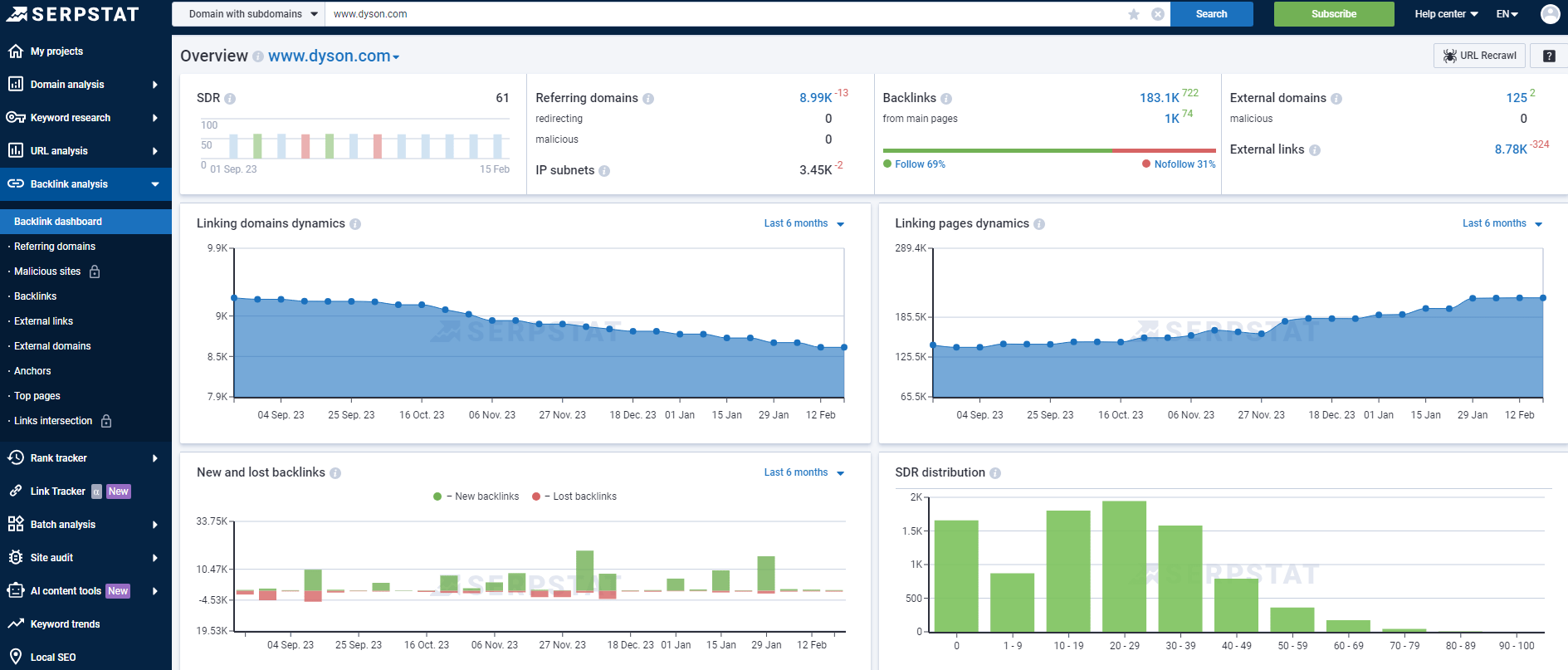
In the realm of SEO, building quality backlinks is akin to gathering endorsements from the digital world. As a traveler relies on recommendations to find the best spots, your website needs backlinks to establish credibility and authority.
Understanding the Importance of Backlinks
Backlinks, also known as inbound links, notify search engines that others like your content, helping your website rank better in SERPs and attract more visitors. Moz says backlinks show search engines that others think your content is valuable.
Strategies for Acquiring Quality Backlinks
- Content Creation: Create compelling, unique, and informative content that naturally attracts backlinks. Whether it’s detailed travel guides, captivating blog posts, or insightful infographics, content that adds value is more likely to earn backlinks.
- Guest Blogging: Write articles for reputable travel blogs and websites. Not only does this position you as an authority in the travel industry, but it also earns you valuable backlinks from established domains.
- Local Partnerships: Partner with local businesses and tourist attractions to create content promoting their services while linking to your site.
- Social Media Engagement: Share information and interact with your audience on social media. While social media links are typically nofollow, they can increase visibility and organic link-building opportunities.
Measuring the Impact of Backlinks
Backlink impact must be monitored. Tools like Ahrefs or SEMrush can help track the number of backlinks, their quality, and the overall health of your backlink profile. This data is invaluable for refining your link-building strategy and ensuring it aligns with your SEO goals.
Building quality backlinks is a vital strategy in the SEO journey for any travel website. It’s about creating content worth linking to, engaging with relevant partners, and continuously monitoring and refining your approach. In the competitive travel industry, backlinks are not just connections; they’re bridges leading to higher visibility, credibility, and success. In the world of SEO, a strong backlink profile is a ticket to the top of search engine results.
The Power of Social Media in SEO
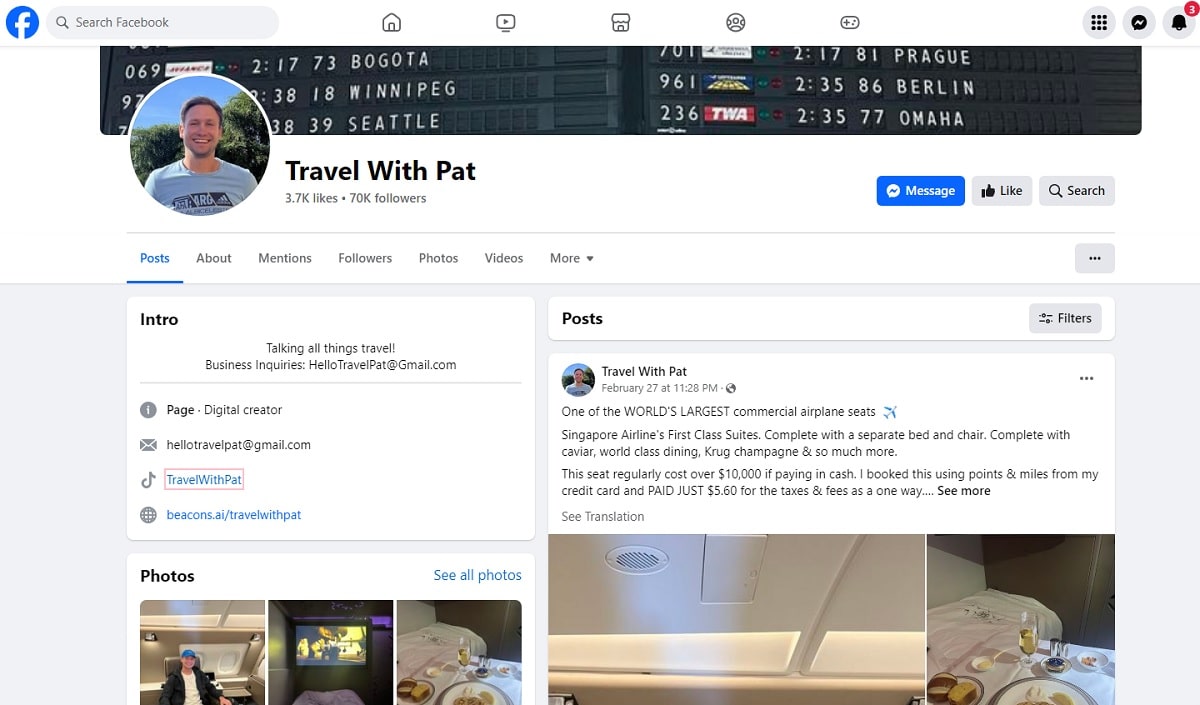
In today’s digital age, neglecting social media in SEO is like missing a treasure map for hidden treasures. Social media has several effects on SEO, although it does not directly affect rankings.
Enhancing Brand Visibility and Traffic
Potential tourists crowd social media networks like crowded markets. Establishing a strong social media presence extends your reach beyond traditional search engines. Instagram and Facebook are great for displaying travel places with photos and tales. This visibility can increase website traffic, as users are often prompted to explore more after a compelling social media post.
Boosting Content Distribution and Engagement
Social media distributes content well. Sharing blog posts, videos, and travel guides on social platforms amplifies your content’s reach and engagement. According to Sprout Social, social media shares increase content distribution, indirectly boosting SEO by generating traffic and prolonging the lifespan of content.
Leveraging User-Generated Content
Social media reviews and testimonials boost credibility and trust. Positive experiences real users share can influence others and drive more traffic to your site. This organic promotion is invaluable for building brand authenticity and loyalty.
Social Listening for SEO Insights
Social listening technologies let you track brand mentions and keywords to learn what your audience wants. This information can guide your content strategy, ensuring it aligns with user interests and search trends.
Social media may promote brand awareness, content engagement, user-generated content, and insights in SEO. In the vast ocean of online content, social media platforms are the currents that can propel your travel website to the forefront of your audience’s minds. Remember, in the intricate dance of digital marketing, social media and SEO move in sync, each amplifying the other’s strengths.
Monitoring and Adapting Your SEO Strategy
Embarking on an SEO journey is akin to navigating uncharted waters; constant monitoring and adaptation are key to reaching your destination. What works today in search engine optimization, especially in the tourism business, may only work for a while.
The Role of Analytics in SEO
The first step in monitoring your SEO strategy is to dive into analytics. Tools like Google Analytics and SEMrush offer a treasure trove of data, helping you understand user behavior, traffic sources, and keyword performance. This data isn’t just numbers; it’s a story about how well your SEO efforts resonate with your audience. For instance, a sudden drop in traffic might indicate a recent algorithm change, necessitating an SEO strategy shift.
Responding to Algorithm Updates
Search engines frequently update their algorithms, and each update can significantly impact your site’s ranking. Staying informed about these changes is crucial. Websites like Search Engine Journal provide timely updates and insights into the SEO world. When an update occurs, assess its impact on your site and be ready to tweak your strategy accordingly.
Competitive Analysis for Continuous Improvement
SEO is not a solo journey; it’s a race against your competitors. Regularly analyzing your competitors’ strategies can offer insights into new trends and tactics. Tools like Ahrefs allow you to track your competitors’ backlink profiles and keyword rankings, offering a blueprint for areas you can improve or innovate.
Staying ahead in the competitive travel business requires continual SEO strategy monitoring and adaptation. It involves keeping an eye on analytics, staying abreast of algorithm updates, and learning from competitors. In the digital voyage of SEO, the winds of change are constant, and adapting swiftly is the hallmark of a successful strategy. Remember, vigilance and adaptability are your most reliable compasses in the dynamic world of travel SEO.
Future of Travel SEO: Emerging Trends and Practices

Like looking through a telescope, travel SEO trends and techniques are about to change the landscape. As the travel industry constantly evolves, so does the approach to SEO, making adaptability and foresight essential.
Voice Search Optimization
The rise of voice search is revolutionizing the way travelers seek information. Voice search optimization is important as Alexa and Siri become more popular. This involves focusing on natural language, question-based queries, and featured snippets. Search Engine Land highlights the importance of structured data and local SEO in optimizing for voice search, as queries are often more conversational and location-specific.
AI and Machine Learning
Machine learning and AI will change SEO techniques. These technologies offer sophisticated ways to analyze user behavior, predict trends, and personalize content. AI algorithms can identify and anticipate audience-relevant content, enabling more targeted and effective SEO methods.
Video Content and Virtual Reality
Video content continues to surge in popularity, with platforms like YouTube becoming key search engines. Incorporating high-quality, engaging video content about destinations and travel experiences can significantly boost SEO. Additionally, the advent of virtual reality (VR) in travel marketing offers an immersive way to experience destinations, potentially influencing future SEO strategies to include VR content.
Sustainability and Responsible Travel
As travelers become more environmentally conscious, there’s a growing trend towards sustainable and responsible travel. SEO strategies must adapt by including content highlighting eco-friendly practices, sustainable destinations, and responsible tourism initiatives.
The future of travel SEO is a dynamic and exciting frontier, with voice search optimization, AI and machine learning, video content, and a focus on sustainability leading the charge. Staying ahead of these trends will require constant learning and adaptation. In the ever-changing world of travel SEO, embracing these emerging trends and practices is not just about keeping up; it’s about setting the course for future success. In the journey of travel SEO, the only constant is change, and staying ahead means staying informed and adaptable.
Conclusion
Starting an SEO career in the tourism business is like sailing on a large ocean, where adaptability and learning are essential. As we’ve explored, effective travel SEO encompasses everything from understanding the digital landscape and crafting tailored strategies to leveraging social media and staying abreast of emerging trends. SEO is a constant process that demands patience, ingenuity, and intelligence.
Are you intrigued to discover more about the digital marketing universe? Dive into the plethora of insightful articles on Plerdy’s blog, where each piece is a treasure trove of knowledge waiting to be unearthed. And if you’re seeking to elevate your website’s performance and user experience, explore how Plerdy’s comprehensive suite of tools can empower your online presence. Set sail with Plerdy and navigate the thrilling seas of digital success!
